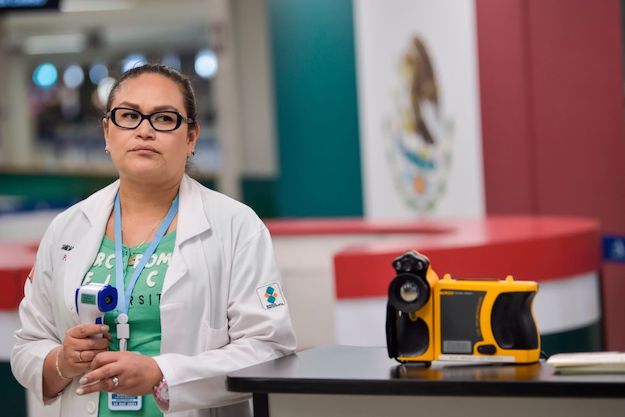To hear some political elites tell it, Mexicans shouldn’t worry too much about corruption.
Despite polls showing that citizens’ perception of corruption is higher than ever, President Enrique Peña Nieto and members of his government have recently suggested that the use of social networks has simply made long-existing crookedness more visible.
Rather than fully accepting their responsibility to combat corruption, then, it would appear the government is trying to pretend it isn’t there. On Dec. 14 the Chamber of Deputies voted to make it illegal for citizens to publish corruption accusations online if the allegations could damage the target’s credibility – even if those allegations turn out to be true (the measure is now pending in the Senate). Peña Nieto suggests that government institutions are “being bullied” by a civil society that unfairly sees corruption hiding in every corner.
So, does his argument hold water?
The short answer is “no.”
An extensive review of publicly available data suggests that corruption in Mexico has indeed become more widespread in recent years. What’s more, evidence suggests that social media and an open press actually decrease public perceptions of corruption, contrary to what Peña Nieto and others claim.
The most widely used measure of experienced corruption – that is, of having been party to an act of graft – is the Global Corruption Barometer, compiled by Transparency International. That scale shows that corruption has increased significantly in Mexico. From 2011 to 2013 the percentage of Mexicans from whom a public official requested a bribe rose from 31 to 51 percent, the largest increase in Latin America. In second place was Venezuela, where bribery only increased from 20 to 38 percent.
The manner in which this corruption has seeped into the most basic interactions with the government makes people more likely to notice it. According to Mexico’s national statistics agency, in 2015 about 24 percent of public prosecutors’ offices requested bribes to perform their jobs, more than twice the rate in 2011. Bribery in simple proceedings with the department of motor vehicles, such as getting a driver’s license, registering a vehicle or getting a car verified for pollution emissions, also increased from 9 percent of cases to 14 percent. The civil registry, where bribery was essentially non-existent until 2011, is now accused of requesting bribes from four of every 100 Mexicans. In Morelos, a short drive from Mexico City, citizens report acts of corruption in a full 20 percent of their dealings with authorities.
Is this just a question of citizens having more outlets to complain or report malfeasance? Not likely. According to the Bayesian Corruption Index, one of the only measures of corruption perception that is comparable over time, from 2012 to 2015 perceptions of corruption increased by an average of 0.7 percentage points per year. In the three previous years (when access to Twitter in Mexico was significantly lower) they increased by 0.8 points, and in the three years before that (when even fewer people tweeted) the index increased 0.9 percentage points. There is no demonstrable relationship between increases in perception of corruption and access to social networks in Mexico. If anything, the relationship is inversed.
Numerous academic studies further show that citizens’ perception of corruption is higher in authoritarian countries with a co-opted press – not the other way around. A free press and democratic institutions help citizens put corruption in the proper perspective, rather than falling prey to fatalism or conspiracy theories.
In Mexico, where social networks have provided an outlet for unprecedented freedom of expression, what we observe is not that people perceive more corruption but rather that they dare to comment more about it, with more freedom and fewer restrictions. This is a good thing.
With Mexico’s 2018 elections fast approaching, political elites would do well to accept that corruption has increased and that it has done so in a way that directly affects their constituents. The political debate should center on how to replicate the few successes that the country has already had in controlling corruption. The most notable of these, surprisingly, comes from the country’s police departments: While in 2012, three of every 30 federal police officers failed integrity tests, today only one in 100 fails.
Such successes did not come from denying police corruption, or attributing it to bad publicity on social networks. It came from accepting and addressing the problem. Any other reaction from Mexican political elites will only increase the already pervasive citizen sentiment that politicians simply don’t get it. The survival of Mexico’s pluralistic democracy may well depend on this. Attempting to hide public comment about corruption – or approving litigation in the hopes of covering it up – will only be counterproductive.
—
Rios is a research fellow at the Wilson Center for International Scholars in Washington, D.C. and was appointed by the Mexican senate as commissioner of the National Anti-Corruption System. She has a Ph.D. in government from Harvard University. Follow her on Twitter @Viri_Rios








